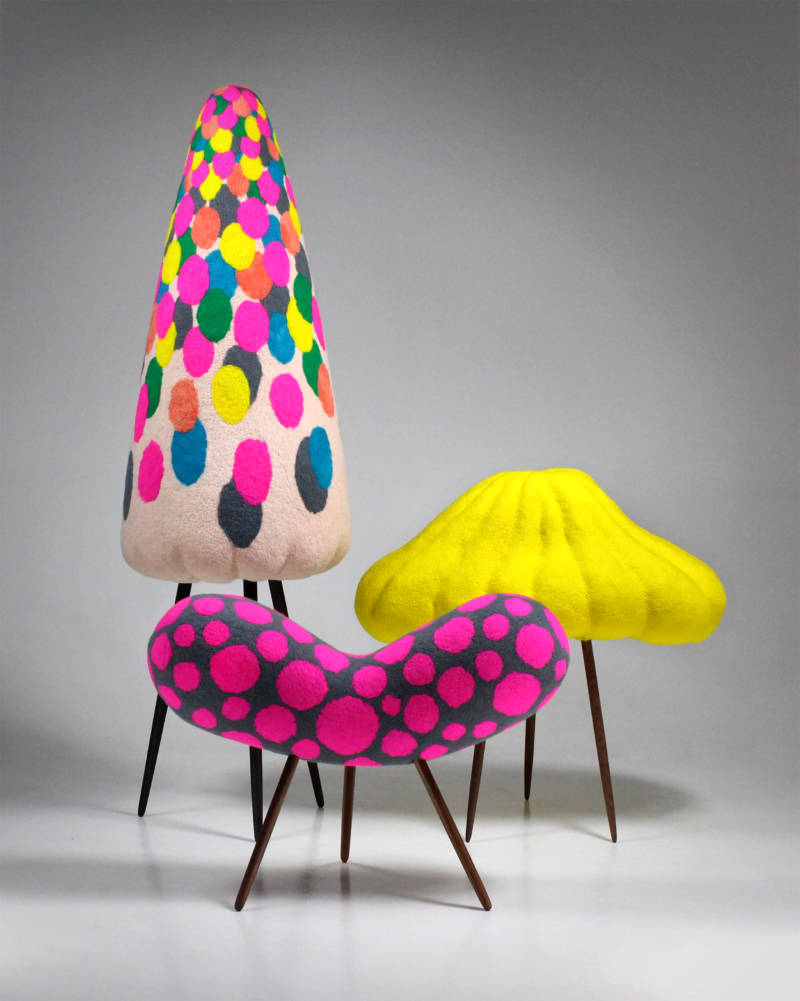Masako Miki loves shapeshifters—which makes sense, because she is one. Since she left Japan at age 18 to study art in the United States, her practice has grown and morphed to encompass printmaking, watercolors, felting, installation and large-scale sculpture.
That material evolution mirrors changes in her own life; Miki credits her art with helping her learn to communicate and adapt to life in the U.S. as an immigrant. “My first art class in the United States was very important because I felt like I was accepted by the community,” she says. “We have a common language, which is the visual language.”
Many of Miki’s works are delicate images of animals, sometimes incongruously paired (like a wolf on the back of a whale), which she admires for their ability to change and survive in different environments. Evolution and metamorphosis, for Miki, is just an animal’s form of cultural survival.
More recently, her practice includes abstract felted shapes inspired by Shinto traditions—a Japanese religion that believes everything in the universe is imbued with kami, or spirits. “They’re always more than one singular entity,” Miki explains. “They are such a part of our culture, we see them everywhere.” During a residency in Kamiyama, Japan, Miki reconnected to the Shinto stories and beliefs of her childhood, and became determined to translate that folklore into art objects, imbuing the resulting colorful, fuzzy forms with their own unique characters.

For her 2019 MATRIX 273 solo show at the Berkeley Art Museum and Pacific Film Archive, Miki dramatically enlarged her previously small-scale felt sculptures to give them an even greater presence—some stand over 6 feet tall. Once inhibited by her inability to bridge language barriers and make friends, Miki now creates colorful installations of felted objects and vinyl shapes that break down some of the formality of fine art settings. “When you have less boundaries, it’s easier to connect,” she says. The shapeshifters’ fluidity is a reminder that we can all change. —Text by Sarah Hotchkiss

